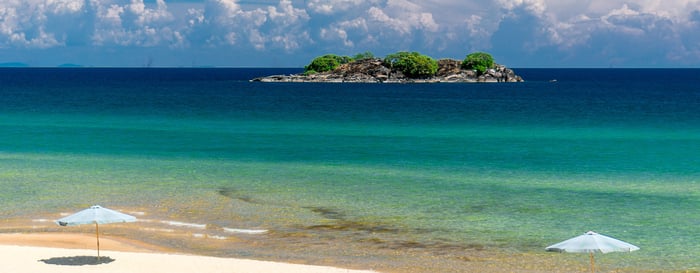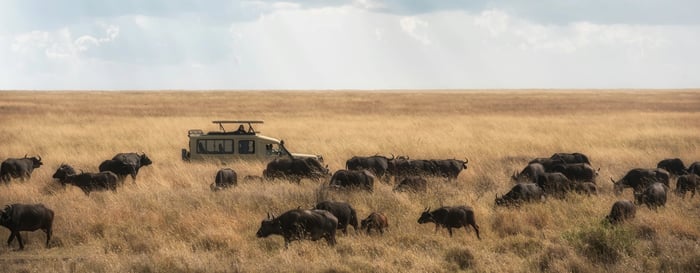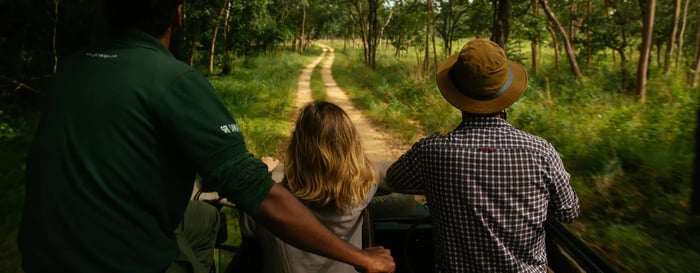The dry, rocky coastline of Namibia looks like one of the most inhabitable places on earth. The Bushman of the Namibian interior called the region “The Land God Made in Anger” and Portuguese sailors called it the “Gates of Hell”. But it’s this famed stretch of coastline that more than 150 lions have made their home. Feasting on zebra, ostrich and seals, these super lions prowl along the coastline searching for food. Once it was thought that they had died out, but in 1997 rangers discovered signs of these creatures in more impenetrable areas of the region. This was enough to bring the former ranger and lion researcher Dr Flip Stander back to the area to find out how these incredible animals were surviving. Stander arrived in 1997 and never left.
Stander had seen one of these creatures in the early 1980s devouring a seal upon the shore. “That was a turning point for me. We’d heard about these lions going onto the beach and we found a lioness on the beach eating a seal that she killed,” says Stander. “It was such a dramatic image. I thought ‘how on earth do they manage to live here?’ and it intrigued me,” says Stander.
His admiration of these creatures made him want to dedicate his life to researching and protecting them. Sleeping only four hours each night, or sometimes not at all, if the animals decide to move. The ultramarathoners of the lion world, the desert lions will often walk up to 200 kilometres each night.
Stander has placed a radio collar around each lion so that he can record their movements. But as they can only be used within a 20 kilometre radius, Stander more often than not has to rely on his ranger skills and track them without technology.
As a teen track star, Stander looked as if he was moving towards a career in athletics, but at the age of 18 a severe car accident put an end to his sporting dreams. However, it opened up another avenue. Stander had spent each summer holiday helping his family’s wildlife protection business. Each summer he would join them as they would move animals from over populated areas.
Stander started work in a national park in Namibia as a game ranger. But as he went about his daily work, checking water provisions and roadways, he would bump into the scientists and researchers working in the park. He started to help them out with small projects, and soon realised that this was what he wanted to do full time. So he decided to go to university so that he could join them as a researcher.
Stander started to research the lions on the Skeleton Coast in 1984, but then when he and his fellow researchers thought that the population had become extinct five years later, Stander moved into the country and started studying the lions in the savanna.
It was here that Stander rocked the science world, by discovering the key to how lions hunt as a pride. Until now biologists hadn’t understood that the lions actually operated as a team. Each member of the pride had a job when it came to a kill, and they wouldn’t act until another lion had completed their task. It was the mild-mannered ex-ranger who recorded this.
Stander spent the next few years taking advanced studied at Cornell and Cambridge and increasing his knowledge of wildlife. He even joined a research team tracking whales by their calls in the Bering Strait.
Then Stander got the call that would change his life forever. In 1997, one of the rangers from the Skeleton Coast phoned him to say that they had started picking up signs of the desert lions again. They told him that they had survived in an area that was practically inaccessible. Stander got the next plane out to the coast.


Stander was one of the first to properly research the animals. A British military captain in the 1930s had made some notes on that area. And Stander believed that Ernest Hemingway had even made a note about the lions on the beach in his novel The Old Man and The Sea. But it was Stander’s work that really helped people start to understand more about them.
While Stander has now been working with these animals for more than 30 years, he still keeps them at arm’s length. “We keep our distance completely, there’s no physical interaction,” says Stander. “They might know my vehicle, but they don’t know me. I never get out of the car in front of them.” Although he admits, that they do recognise his truck. They even feel comfortable enough to use him as a babysitter when they go out to hunt. Pretending to be annoyed by this impromptu duty, Stander says: “I want to follow them, but I can’t because the cubs are playing under the car”. However, you can see this rugged outdoorsman is truly honoured.
Stander does most of the work on his own, so that he can be more vigilant and that his “footprint is smaller”. His research involves endless hours of waiting, although the budding musician gets to practise his guitar in the desert until the lions start to move.
And when there’s not the endless hours of waiting, there’s the punctured tyres and sandstorms. “Challenging days are often and common – having a blow out and no spares to fix it in a howling sand storm. You sit in the car and can’t open the window. You lose all hope,” says Stander. “So in those situations, I’ll close the door, work on my computer and do something constructive. And build up the courage to tackle this problem.”
But when there are good days, this leaves everything else in the shade. Stander remembers the day that a male lion discovered a water hole that the lion population had forgotten about when their numbers dwindled. “I followed a beautiful male lion to the Unyab Delta. You could almost see that he’d hit the honeypot. He killed an oryx within the first hour of being there and stayed around for weeks and weeks around this spot,” says Stander.
While Stander chooses not to intervene in nature’s drama, he has set himself the rule that he can help if it’s man that has caused the problem. “I have to use a strong will not too intervene. At times it’s not easy. But these animals are free ranging and we have to respect that,” says Stander. “My job is that I observe. But if a problem has occurred because of people – that’s our point of justification. I will then step in and call a vet, or give it medical attention.”
But Stander through his research has learnt how to keep man and lion as far away from each other as possible. And he has learnt how to do this with the help of the bioacoustics work that he learnt in the Bering Strait. Stander has recorded lions at work, rest and play, and now uses these sounds to manage the movements of the animals. “For example if I need to change the collar on a lion and it’s in an area that’s inaccessible by car and has few tracks, I will use a call to bring them closer,” says Stander. “This can be for example, the call of a lioness and her cubs. Or if they are getting too close to where people are living, I will pick a sound that has some aggression – such as that of a male after a fight – to make them move further away.”
Stander also updates the herders on the movements of the lions. Each day they can download the position of the lions to their smartphones so they know if they need to move their herd.
The lions Stander says are now in a good place, there are about 150 animals that are now living by the coast. While they don’t suffer from poachers in the area, Stander says that the lion population can be at threat from trophy hunters or local people with a bad attitude who see them as vermin.
And this is why Stander believes highly in the power of the tourist. If people travel to the Skeleton Coast, to take a look at these animals, they are instantly showing the locals that they are not vermin, but majestic animals that need to be respected. “Tourists give value to the animals. If tourists come it gives us the chance to argue with the powers that be, that this income is coming into the country because of these animals,” says Stander.
Northern Malawi Adventure
-
See abundant birdlife and reintroduced elephants at Nkhotakota
-
Go trekking and mountain biking around the great plateau at Nyika
-
Relax and unwind on the pristine beaches of Likoma Island
-
Experience river, 4WD, and walking safaris to see Malawian wildlife
-
Enjoy a variety of watersports in freshwater Lake Malawi
Safari Highlights of Tanzania
Ngorongoro Crater & Lake Manyara Serengeti & Northern Tanzania Tanzania Africa
-
Enjoy spectacular views over the Ngorongoro Crater
-
Experience the thrill of seeing African wildlife on game drives
-
Track animals on foot with an experienced guide at Grumeti Reserve
-
Witness wildebeest crossing the river in the Serengeti National Park
-
Stay in intimate, luxury bush camps with pools and spa treatments
Sri Lanka with Kids
Colombo Galle Fort Sri Lankan Safaris Sri Lanka's Cultural Triangle Sri Lanka
- Explore the city of Anuradhapura, one of the most important sites in medieval Asia
- Visit the rock fortress of Sigiriya and the Dambulla Cave Temple
- Wind through the Central Highlands by rail and visit a tea plantation
- See Sri Lanka’s wildlife on game drives in the Yala National Park
- Relax on pristine beaches, and enjoy watersports and whale watching








